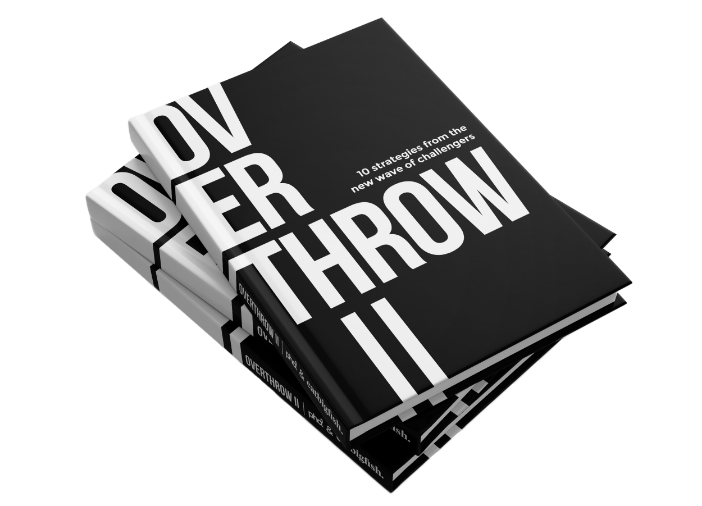In the third episode of PHD and eatbigfish’s podcast series Overthrow II: Challenger strategies for a new era – a spin-off of their 2019 publication Overthrow II – host and founder of eatbigfish Adam Morgan speaks with Ernesto Schmitt, co-founder at The Craftory, and Rohan Tambyrajah, chief strategy officer at PHD Global Business, on venture capitalists, investment in challenger brands and the common characteristics of a challenger.
The rise of cause capital
As part of The Craftory, a venture capitalist focused solely on challenger brands, Ernesto Schmitt knows a thing or two about challengers. In his conversation with Adam Morgan in episode three of the Overthrow II podcast, Schmitt states that to be an entrepreneur and a challenger in this new era, there is an need for optimism and imprecision. Entrepreneurs need to be optimistic and see opportunity where others see barriers and obstacles – for, he explains, “if others already saw the opportunity as you did, the idea would have been done before.”
Entrepreneurs need to be imprecise because when starting a new business, no one really knows whether it’s going to be a success until it’s part-way established and, if new businesses needed to know the destination before taking that vital first step, they would probably never take it.
Cause-driven challenger brands
Schmitt explains that there are three ways you can effect change at scale: working inside the government; infinite means of wealth to quickly take action for large groups of people; or through the power of consumers. It is the latter which is most within reach. “If you engage with hundreds of millions of consumers who make small consumption choices every day and shift their perception in a slightly different direction,” says Schmitt, “the whiplash effect of change can be dramatic. For example, the abolishment of plastic straws – hundreds of companies now provide alternatives in a bid to save the planet’s resources.”
Where did this all come from? It came from a small number of consumers choosing products that represented an alternative to the status quo. Consumers opted for the alternative because it’s the alternative that mattered the most to them and clearly outlined the cause it represented. That is why cause-driven challenger brands are what The Craftory back and why it’s so important to have cause at the heart of everything.
Where is the opportunity for marketers to be challengers?
Following his conversation with Schmitt, Morgan is joined in the (remote) studio by PHD Global Business’ Rohan Tambyrajah to revisit and analyse Schmitt’s early observation that entrepreneurs and challengers need to be optimistic and imprecise.
Tambyrajah agrees, adding that optimism can be quite a sensational state of mind, and the danger we all face, particularly in this current climate, is retiring into the safety of what has been previously proven. “It’s really important for marketers to brace the unknown,” he says, “to find new ways of working that is rooted in optimism and also embrace imprecision as a way of working.”
Tambyrajah concludes that published studies and data show clearly that growth comes from creativity that really pushes the boundaries and starts to chart unchartered territories. If cause is the compass pointing a challenger brand north, then creativity is the wind that actually gets them there.
Hear the full podcast from Adam Morgan, Ernesto Schmitt and Rohan Tambyrajah with the third episode of ‘Overthrow II: Challenger strategies for a new era’, available on Spotify, Google, Apple Podcasts and Audioboom. To purchase a copy of Overthrow II or to find out your challenger type, click here.
Episode three, The rise of cause capital marks the halfway point of the six-episode series.
Episode two, How does a brand reclaim its challenger status? heard Kerry Chilvers, Direct Line’s Brands Manager, share an honest perspective on how a brand which has lost its challenger edge in a changing category can revitalise its challenger status and brand proposition. The premiere episode, The changing landscape for challenger brands, featuring PHD EMEA’s Chief Strategy Officer, Malcolm Devoy, asks brands to honestly examine which path they’re taking at this advertising crossroads – the useful and practical, or the creative.



